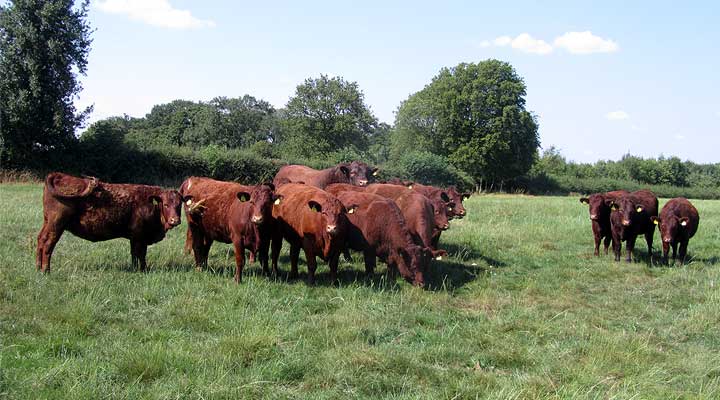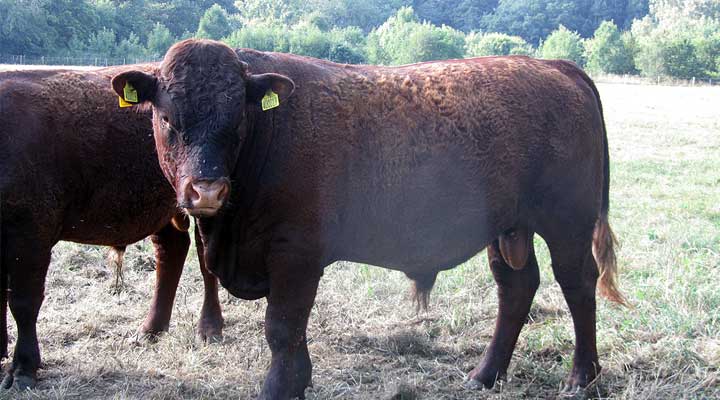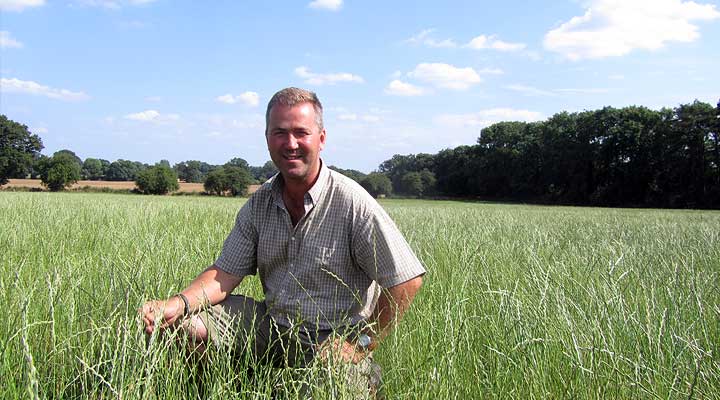High quality beef from just pasture

Jonathan Chapman farms within sight and sound of the M25 at one of its busiest stretches on the Herts/Bucks border. His father ran arable, pig and dairy enterprises at Sarratt, but now an expanding grass-fed beef herd co-exists with a horse livery business on 63ha (155 acres) in separate parcels of land.
As a member of the Pasture-Fed Livestock Association, Jonathan was determined to set up an enterprise that was not dependent on grain, and that could capitalise on the large population of affluent consumers on his doorstep. Chess Valley Beef was born in 2010 with the purchase of six Red Devon cows with calves at foot from Cambridgeshire breeder Gavin Hunter.
“I chose this breed because they are docile and easy to handle,” says Jonathan. “But the main reason is their ability to finish off grass. We have a mixture of permanent pasture, parkland and herbal leys which provide all the feed they need to grow and produce high-quality, flavoursome meat.”
The herd is now up to 48 suckler cows with the aim of reaching 65 head. Calving currently takes place over a tight ten-week period from 1 April. Next year he will be calving half the herd in the spring and half in the in the autumn to even out the supply of meat for his expanding beef box business.
At the moment heifers are kept as replacements and bull calves kept entire to take advantage of their superior growth rates – averaging 1.13kg/day from birth to slaughter – and conformation.

They finish solely off grass from 18 months to 24 months of age at up to 390kg deadweight – averaging grades of R4L. The meat is hung for four weeks before being sold direct to horse riding clients and local residents and through nearby restaurants – earning a retail meat yield of £2,200 to £2,500 per beast.
Over-seeded leys for haylage

Renovated grass in 22ha (55 acres) of parkland provide two cuts of haylage – the first cut taken early at the end of May to provide high quality feed for young growing beef cattle and horses. The second, bulkier lower quality cut is for winter forage for the cows when they are housed from the end of November until calving.
Three years ago these fields were sub-soiled to reduce compaction and direct drilled with a specialist over-seeding mixture containing hybrid and large seeded tetraploid ryegrasses to facilitate rapid establishment. The mix also included Lofa, a stress tolerant festulolium which performs well in the sandy clay loam soil over chalk, which can sit wet in winter but also dry out in summer.
“The overseeding has been a brilliant success,” says Jonathan. “Introducing new varieties into swards is always going to produce better quality grass. We are regularly blighted by crown rust – but there is no sign of it in the improved grass.
Rotational grazing
Seven miles away on a 20ha (49 acres) rectangular block of land, Jonathan has been transforming badly poached, neglected and weedy grassland into a prime grazing.
After spraying with roundup to clear the docks, thistles and ragwort, the ground was disced, which brought up large amounts of black plastic and other rubbish. After this was cleared, he drilled a herbal grazing ley formulated specifically by Oliver Seeds containing plantain, chicory, clover, yarrow and perennial ryegrasses. One cut of haylage was taken at the end May, and the cows and calves grazed the aftermath down hard during the summer.
Jonathan has invested in perimeter and internal static fencing which will easily divide into smaller paddocks using electric fences. The whole area can be rotationally grazed in 21 to 28-day cycles to encourage the growth of high quality pasture.
“We are not organic but I would like to rely on less external inputs like bought-in fertiliser. Making haylage is our biggest variable cost but it is much cheaper than buying in concentrates,” says Jonathan. “Investing in the right type of grass means we can supply all the nutrients our cattle need ourselves.
“And by retailing the meat we can cut out all the middle men who in conventional meat supply chains take up to 65% of the value of the carcase. Basing a business around grass takes a longer term, more sustainable approach to meat production, produces a superior product and is better for the land and environment.”



